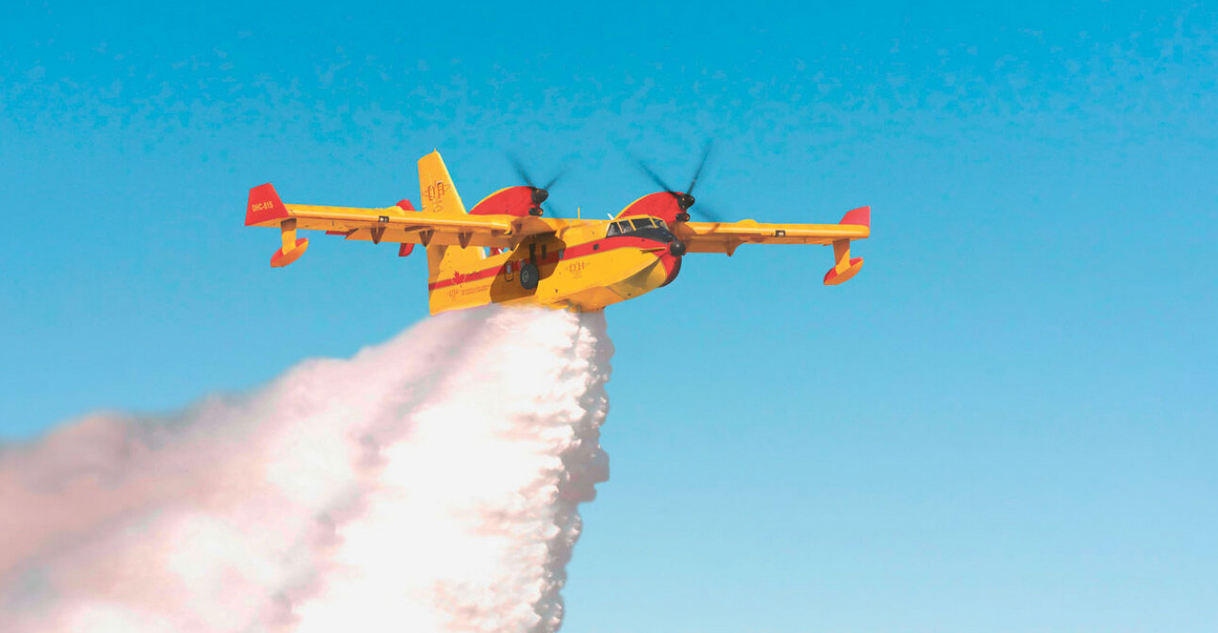They are the world’s most beloved planes. Wherever they operate, they have become almost legendary. During the summer seasons, all eyes are anxiously glued to the sky awaiting their arrival. We are talking about the Canadair firefighting aircraft, the new generation of which, the DHC 515, was bought by Greece.
Half a century has passed since Greece received the first Canadair planes, most of which are still flying. Since then, many things have changed: the manufacturer closed down, the design of the aircraft was acquired by another company, Viking, the production line stopped due to lack of new orders, and the climate crisis has turned wildfires into megafires, with their own microclimates and temperatures that make them almost unbeatable.
Today, 50 years later, Greece is one of the few countries for which Viking is restarting the production line, with the aim of delivering seven aircraft of the newest generation of Canadair, the DHC 515, costing about 360 million euros.
Throughout all these years, we’ve grown accustomed to admiring the self-sacrifice of the Hellenic Air Force pilots, who battled the inferno of wildfires in aircraft designed and built in the previous half-century. This means they had to fight the fires using almost exclusively analog instruments in environments where the temperature resembled an inferno. This description is rather modest when one considers that the pilots of Canadair operate against wildfires in cockpits without air conditioning, with temperatures reaching up to 40 degrees Celsius under shade!
This is now changing with the acquisition of the DHC 515. Air conditioning for the crews of firefighting aircraft is just a drop in the ocean of new technology: touch screens with three-dimensional topographic maps, analyses of drop points, the capability for night flight and personnel and material transport, larger tanks, more powerful engines, and of course, the legendary structural strength, reliability and operational capability for which Canadair aircraft are famous and sought after worldwide, are some of the features that the new generation brings.
See Also:
Suicides in Greece 2010-2023: Extremely concerning data
The manufacturing company reports that the DHC 515 has the capacity to carry 7,000 liters of water (15% more than the CL415) or retardant, and the ability to scoop water in just 14 seconds.
In the cockpit, everything is designed to allow pilots to communicate with the operations center, make drops, and plan their next moves with precision down to the centimeter. And here’s something more: the DHC 515 is designed not only to operate and fight fires in conditions of up to 5 Beaufort, but also to take off and land from small patches of land, even just a little over 600 meters.
But the absolutely new feature that DHC 515 introduces to Greece is the capability for night water drops. Viking has informed the Greek authorities that the new Canadair aircraft are “HUD ready” (a.k.a. “fitted-for-but-not-with”) which means that in the coming years after their delivery, it will be possible to purchase special helmets that, under certain conditions, will allow their crews to operate even after darkness falls.
Ask me anything
Explore related questions





